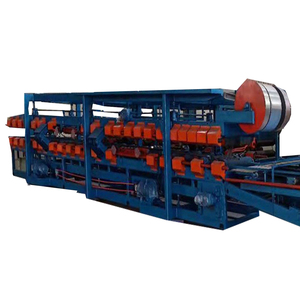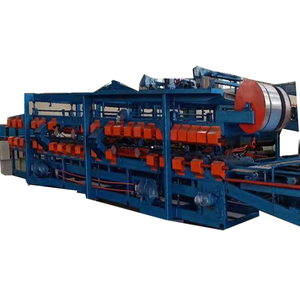
All categories
Featured selections
Trade Assurance
Buyer Central
Help Center
Get the app
Become a supplier

(3362 products available)



























Market Overview: The CNC machine market has demonstrated robust growth, with the global CNC machine tools market estimated at USD 18.3 billion in 2023 and projected to reach USD 26.7 billion by 2030, reflecting a CAGR of 5.6% during this period. This growth is particularly noteworthy in the context of polyurethane processing, where CNC machines are increasingly favored for their precision and efficiency in shaping and cutting materials. The CNC controller market also saw a rise from USD 3.13 billion in 2023 to USD 3.32 billion in 2024, with expectations to reach USD 4.75 billion by 2030, growing at a CAGR of 6.12%, according to 360iResearch™. This increasing adoption underscores a shift towards automation and advanced manufacturing technologies in various sectors, including automotive and aerospace, where polyurethane components are essential.
Industry Dynamics: Key drivers for the CNC machine market in polyurethane applications include the rising demand for precision-engineered components and the automation of manufacturing processes. The U.S. market, valued at USD 4.8 billion in 2023, is forecasted for continued expansion, primarily due to innovations in CNC technology and growing investments in manufacturing capabilities. Additionally, consumer preferences are shifting towards sustainable and lightweight materials, further enhancing the appeal of CNC machines that can efficiently process polyurethane. As manufacturers seek to reduce waste and improve operational efficiency, CNC machines equipped with advanced features are becoming indispensable. Moreover, the integration of IoT capabilities into CNC machinery is set to revolutionize monitoring and maintenance practices, addressing customer pain points related to operational downtime and maintenance costs.
A cnc machine for polyurethane has many types, each with distinct features and specifications to cater to various industries' needs. The following table summarizes some of the most common types of CNC machines for polyurethane and their key features.
CNC Router
CNC Routers are machines that use a computer-controlled process to cut foam material precisely. They are typically programmed using CAD/CAM software, allowing them to create intricate designs and shapes on foam materials accurately. One of the main benefits of CNC routers for foam cutting is their ability to produce high-quality products consistently.
Their design consists of a large flat surface, often referred to as a table, with a mounted rout head that moves in multiple directions above the foam material being worked on. This feature enables the machine to follow programmed paths and easily execute cuts, grooves, and engravings on the foam material.
CNC routers are commonly used in various industries, such as sign-making, architectural modeling, prop-making for film and television, and interior design. They can also be used at home by hobbyists who enjoy creating custom items from foam materials.
CNC Laser Cutter
This device uses beams of high-energy light to cut through material, which in this case is foam. Polyurethane foam is often used in the production of cushions, mattresses, and soundproofing products, so there is a great need for precision cutting to achieve desired shapes and sizes. CNC laser cutters offer just that by being able to deliver clean cuts with unparalleled accuracy.
In addition to this fact, polyurethane foam cutting has to be environmentally friendly and low-skill input. This makes it important when it comes to public health and safety that there should not be too many people involved in the process of cutting; therefore, machines like CNC laser cutters become invaluable tools because they can perform tasks without exposing operators to harmful emissions from processed materials.
Furthermore, these machines help reduce waste by producing more excellent intelligent patterns than traditional methods so that every piece of foam can be utilized maximally.
CNC Milling Machine
A CNC milling machine is used to cut material in different shapes, sizes, and designs. It works by creating 3D foams to form the desired end product through computer instructions that control the tool's movement as it cuts the polyurethane foam. This process involves removing excess material from the foam block until the desired shape is achieved.
One of the notable benefits of using a CNC milling machine for foam cutting is its high level of precision. The computer-controlled movement ensures that even intricate designs can be accurately cut without any human error.
Additionally, these machines are efficient and can produce multiple units within a short time span. This feature makes them an essential manufacturing unit for industries that require consistent production of foam products.
Some key specifications of the CNC polyurethane cutting machine are as follows:
To keep the machine running in good condition, refer to the following maintenance tips:
寿命长
CNC foam machines' precision makes them great for multiple industries. Here are some applications of CNC machines for foam.
Architectural moldings and prototypes
CNC machines can cut and shape foam to make design moldings, including cornices, columns, and decorative trims. These prototypes are cost-effective, and architects can easily adjust them before using real materials.
Model making
In the architecture and product design industries, CNC machines for foam can create scale prototypes. The models help designers visualize their ideas and get feedback as quickly as possible.
Packaging solutions
CNC-cut foam inserts offer reliable protection for delicate items in transit. The custom inserts are now common in the automotive and electronics industries.
Signage and displays
The signage industry works with different materials. CNC machines for foam make it easy to cut strange letters and shapes. The machines create eye-catching displays with layers of foam.
Theatrical set design and prop creation
Prop and design creators can use a CNC machine to make elaborate sets for plays and films. The CNC technology makes it easy to design pieces with intricate details and large dimensions.
Automotive and Aerospace
Aerospace and automotive industries use CNC machines to make accurate foam components for prototype testing. The machines cut foam quickly and precisely for nesting, plug, and layup foams.
Furniture design
A furniture maker can use CNC to design decorative elements like chairs, dining tables, and TV stands. The machines create complex shapes quickly with great control.
Creative arts and sculptures
You can use CNC machines to create large sculptures and artistic installations in the art industry. The device carves foam pieces, whether large-scale works or detailed artistic pieces.
Film and entertainment effects
In film making, CNC machines are used to create elaborate effects and prosthetics. Whether it is masks, creature anatomy, or futuristic weapons, CNC cuts with accuracy and ensures a good fit.
When selecting a CNC foam machine for polyurethane, buyers need to consider the material compatibility, cutting technology, foam density handling capability, maximum work area, software compatibility, control system, automation level and budget considerations.
Q1: What types of foam does the CNC foam cutting machine work with?
A1: CNC machines can handle various kinds of foam, such as Polyethylene (PE) Foam, Polypropylene (PP) Foam, Polystyrene (PS) Foam, and others.
Q2: Is software training provided when delivering a CNC machine?
A2: Most providers give software training online or come to the site for training. In addition, they supply the service of machine delivery and installation, where they will connect, configure, and run the machine for the buyer.
Q3: How fast can a CNC machine for polyurethane cut materials?
A3: Cutting speed is typically between 4,000 and 30,000 RPM, but this can vary. Faster speeds can be used for rough cuts. Higher speeds are generally used for cutting wood, MDF,ACM, PVC boards, and other materials, while slower speeds are better for foam materials.